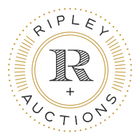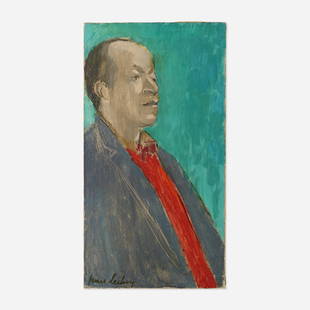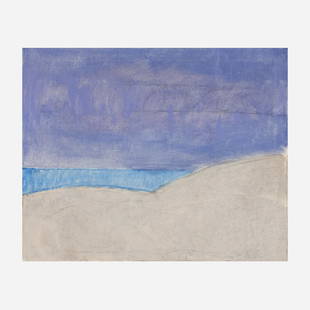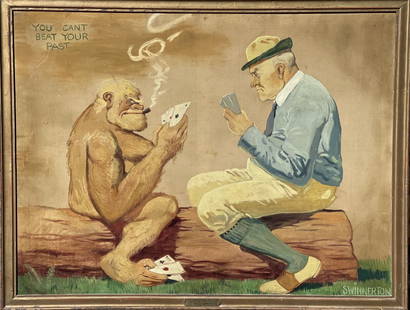
James Lechay, Massachusetts / Iowa (1907 - 2001), "Orchard" with Horse Drawn Plow, oil on canvas, 23
James Lechay Sale History
View Price Results for James LechayRelated Paintings
More Items in Paintings
View MoreRecommended Art
View More












Item Details
Description
James Lechay Massachusetts / Iowa (1907 - 2001) "Orchard" with Horse Drawn Plow oil on canvas signed lower right. Title verso. From the Archives of askART: Biography from Spanierman Gallery (retired) James Lechay was a painter of figures, landscapes, cityscapes and still lifes who played a notable role in the tradition of avant-garde painting in New York and in the Midwest. An artist who defied categorization, he assimilated the precepts of modern European and American art, evolving a spare, semi-abstract style with expressionist overtones; as Lechay himself put it, he was an "abstract impressionist" who followed his own artistic agenda throughout the course of his career. James Lechay was born in New York on July 5, 1907. He spent his childhood in Brooklyn; when he was thirteen his mother died, and he was sent to live with an uncle in Illinois. Lechay went on to attend the University of Illinois, where he received a B.A. in psychology in 1928. In 1929 he dropped out of graduate school to study with his brother, the painter Myron Lechay (1898-1972). He then traveled through Canada and the United States before settling in New York, where he became friendly with painters such as William Zorach, Milton Avery, Mark Rothko, Arshile Gorky and Raphael and Moses Soyer. In the 1930s, he was a leader of the Artists Union and worked for the government's Works Progress Administration, during which time he was sent to Las Vegas, New Mexico, to organize exhibitions of W.P.A. paintings by artists such as Milton Avery and Max Weber. Throughout these years, James Lechay and his brother painted views of the city, working, as he later reminisced, "under the piers, behind elevators, in Chinatown ." In his own oils and watercolors, Lechay eschewed fashionable styles such as Social Realism and Abstract Expressionism. Indeed, inspired by the examples of painters such as Avery and Max Beckmann, he developed a distinctive aesthetic characterized by a subjective use of color, simplified forms and strong outlines; as one reviewer put it, he "worked through abstraction . . . and learned to apply abstract principles to representational ends." His early paintings consisted of landscapes, street scenes and marines--often rendered with muted tones of blue and gray--that evoke a sense of man's isolation in his environment. By the mid-1950s, Lechay was incorporating brighter, more intense colors into his palette. In 1945, James Lechay joined the art faculty at the University of Iowa in Iowa City, working out of a studio that had once been used by Grant Wood. In the ensuing years, he also conducted summer workshops at other institutions, including Stanford University, the Skowhegan School of Painting, the Chinese University of Hong Kong and the Studio Art School of the Aegean . After retiring from his position at the University of Iowa in 1972, Lechay moved to Wellfleet, Massachusetts, where he continued to paint and taught privately. Lechay had his first one-man show at Another Place in New York in 1936. He went on to have many solo exhibitions, including shows at the Artists' Gallery in New York (1938, 1940), Ferargil Galleries, New York (1942, 1943), the Toledo Museum of Art (1943), the Macbeth Gallery, New York (1946, 1947, 1950), the University of Iowa (1951, 1955, 1959, 1964, 1967, 1972), among other venues across the country. Lechay also participated in group exhibitions throughout the Midwest and in the major national annuals, winning such prestigious awards as the Art Institute of Chicago's Norman Wait Harris Medal (1941) and the National Academy of Design's Benjamin Altman Prize (1977; 1991) and Ranger Fund Purchase Prize (1979). Retrospective exhibitions of his work were held at the University of Iowa in 1972 and at the Provincetown Art Association in 1997. Lechay continued to paint up until a few days before his death in Wellfleet on August 11, 2001. Examples of his work can be found in many public collections, including the Addison Gallery of American Art, Phillips Academy, Andover, Massachusetts; the Brooklyn Museum of Art; the Art Institute of Chicago; the University of Iowa Museum of Art; the Sheldon Memorial Art Gallery, Lincoln, Nebraska; the New Britain Museum of American Art, Connecticut; the National Academy of Design, New York; the Pennsylvania Academy of the Fine Arts, Philadelphia; the Provincetown Art Association; the University of Arizona Museum of Art, Tucson; the Smithsonian American Art Museum, Washington, D.C.; and the Wichita Art Museum. 23 7/8"H x 29 3/4"W (sight), 32"H x 38"W (frame)
Buyer's Premium
- 28%
James Lechay, Massachusetts / Iowa (1907 - 2001), "Orchard" with Horse Drawn Plow, oil on canvas, 23
Estimate $2,000 - $3,000
1 bidder is watching this item.
Shipping & Pickup Options
Item located in Indianapolis, IN, usOffers In-House Shipping
Local Pickup Available
Payment

TOP























































![Emilio Grau-Sala "Sur la Plage" Oil on Canvas: Emilio Grau-Sala (Spanish, 1911-1975), "Sur la Plage" [On The Beach], Oil on Canvas, 1958, signed "Grau Sala" lower right, signed, inscribed "Trouville", dated, and titled to verso. Image: 21.5" H x 2](https://p1.liveauctioneers.com/5649/328023/176731071_1_x.jpg?height=310&quality=70&version=1714409606)



















